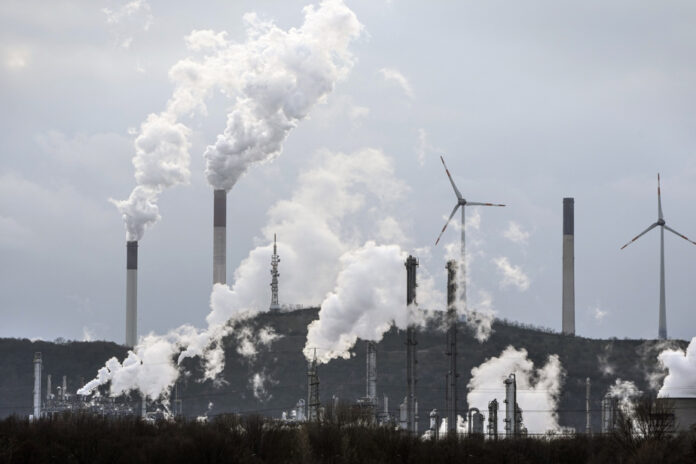The IPCC is increasing warnings to decision-makers around the world in the face of the climate emergency. Decisions made today will have impacts “for thousands of years”, scientists warn in their Sixth Assessment Report.
As expected, the Intergovernmental Panel on Climate Change (IPCC) unveiled its sixth assessment report on Monday since its creation in 1988. If several findings were already known – the report summarizes the six reports published by the IPCC since 2018 – the summary for decision makers of about forty pages serves several warnings to elected officials.
First warning: the window of opportunity to limit global warming to 1.5 degrees is “closing fast”, the IPCC reminds us. To achieve this, greenhouse gas (GHG) emissions must peak by 2025 and then decrease by 43% by 2030. However, current commitments do not achieve this target and even make “more difficult to limit warming to below 2 degrees Celsius,” we warn.
Another caveat: the risks associated with climate change “will become increasingly complex and difficult to understand,” says the IPCC. That’s why scientists point out that every tenth of a degree matters in the fight against global warming.
Climate-related risks are also considered higher than those assessed in the fifth IPCC report, published in 2014. Climate science has been refined and the models used are also increasingly efficient. “For any level of future warming, many climate-related risks are higher than those assessed in the AR5, and projected long-term impacts are up to several times higher than currently observed,” the scientists note.
The report is not kind either when it comes to fossil fuels, the main source of GHG emissions on a global scale. Achieving carbon neutrality requires a substantial reduction in polluting energies, it is recalled. However, public and private funding for fossil fuels still exceeds the sums invested in reducing GHGs and in measures to adapt to climate change, note the IPCC authors.
To support its message, the report also recalls several key findings established since 2018.
IPCC experts also point out that the planet has warmed by 1.1 degrees since the pre-industrial era. And that the consequences of climate change are already clearly visible everywhere on the planet.
It is estimated that “3.3 to 3.6 billion people live in contexts highly vulnerable to climate change”, particularly in Africa, Central Asia, South America and several small island countries.
Between 2010 and 2020, deaths from floods, droughts and storms in these parts of the world were also 15 times higher than in less vulnerable countries.
This is another important finding of the IPCC: global warming will disproportionately affect the most vulnerable populations. Sad irony: these countries have contributed the least to polluting emissions since 1850.
Faced with the scale of the crisis, solutions exist, says the IPCC. A rare good news, the growth of annual GHG emissions fell during the decade 2010-2019 (1.3%) compared to the previous one (2.1%). A drop that does not, however, allow global warming to be contained below 2 degrees by the end of the century. Getting there will require “rapid, deep and, in most cases, immediate reductions in greenhouse gas emissions across all sectors this decade,” the report said.
The IPCC also reports that production costs for solar (85%), wind (55%) and battery manufacturing for electric vehicles (85%) have fallen significantly over the past decade. .
If the solutions are known, the political will does not always seem to be there. The summary for decision-makers reminds us that there are significant gaps between political promises and official GHG reduction targets. The sums invested in the energy transition are also insufficient in all regions of the world.
It remains to be seen whether the past will guarantee the future, as suggested by the UN organization in its press release unveiling its sixth assessment report.
“In 2018, the IPCC highlighted the unprecedented scale of the challenge to keep warming to 1.5°C. Five years later, this challenge has become even greater due to a continuous increase in greenhouse gas emissions. The pace and scale of what has been done so far, and current plans are insufficient to address climate change. »


















